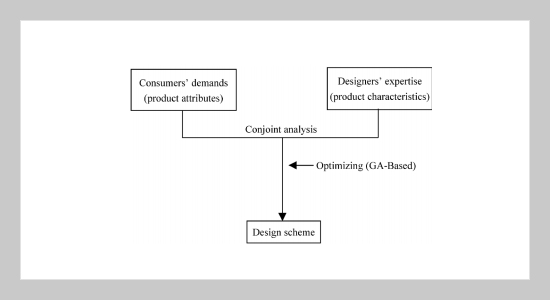Jeng-Jong Lin This email address is being protected from spambots. You need JavaScript enabled to view it.1 1Department of Information Management, Vanung University, Tao-Yuan, Taiwan 320, R.O.C.
Received:
June 3, 2006
Accepted:
May 9, 2007
Publication Date:
March 1, 2008
Download Citation:
||https://doi.org/10.6180/jase.2008.11.1.10
It is important for the R&D division to develop a product, which satisfies both the designer and the consumer. An integrated design model based on conjoint analysis can find several feasible solutions to combinations of design parameters in product designing. In this study, a relationship matrix is used to keep the characteristics of designer and the attributes of consumer related with one another. Along with the increasing number of the characteristics and attributes, there are more solutions to combination sets of product design with conjoint analysis. It becomes increasingly difficult using obtained conjoint data to evaluate product design that involve many characteristics, attributes and levels based on a discipline of “satisfy the most under the least sacrifice”. The applicability of conjoint analysis is improved by using a genetic algorithm (GA) to help search the possible combination sets between levels of characteristics and those of attributes. The experiment results show it is promising for us to use GA in searching the solutions to complex design problem.ABSTRACT
Keywords:
Conjoint Analysis, Integrated Design Model, Genetic Algorithm, Design Characteristics, Design Attributes
REFERENCES
















